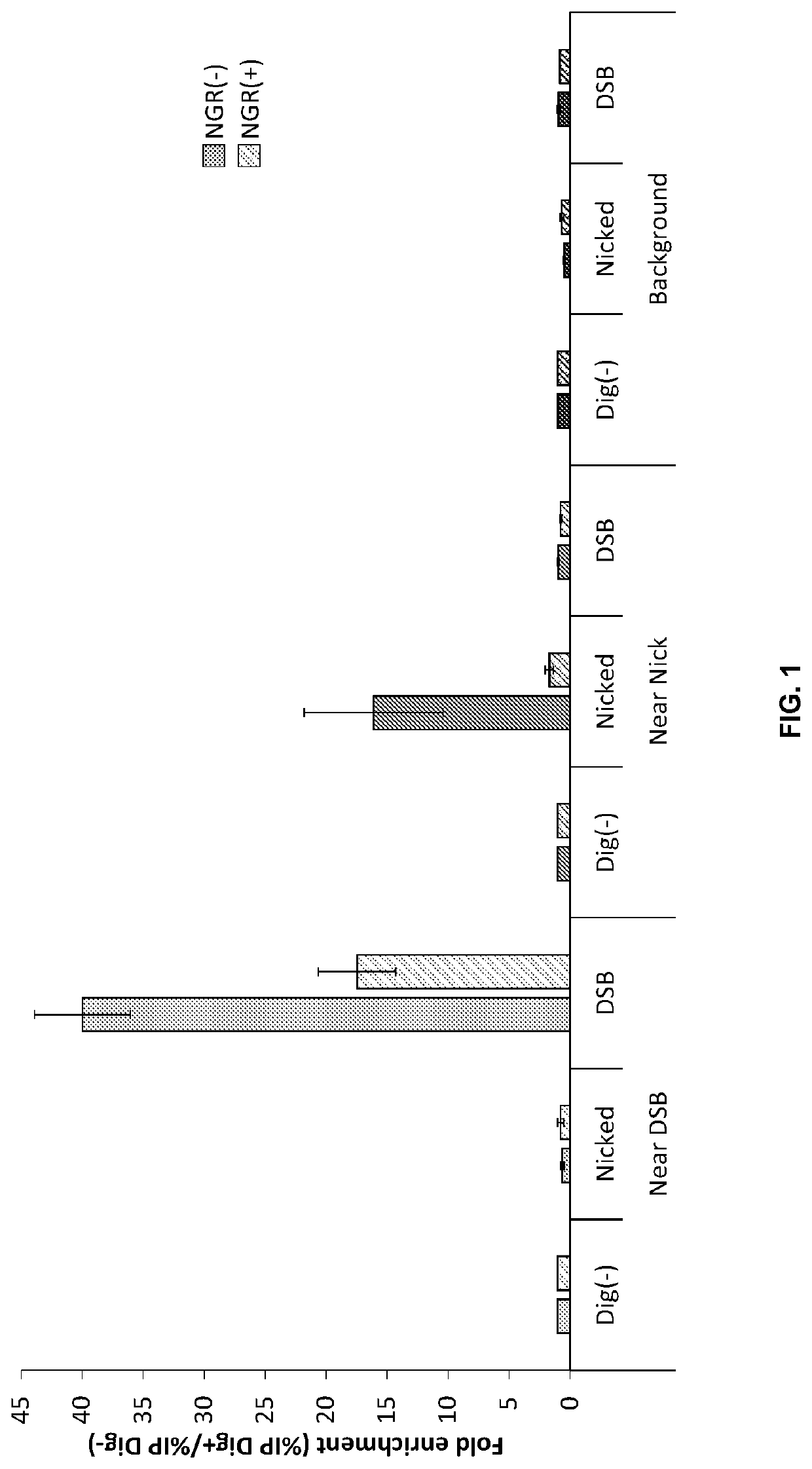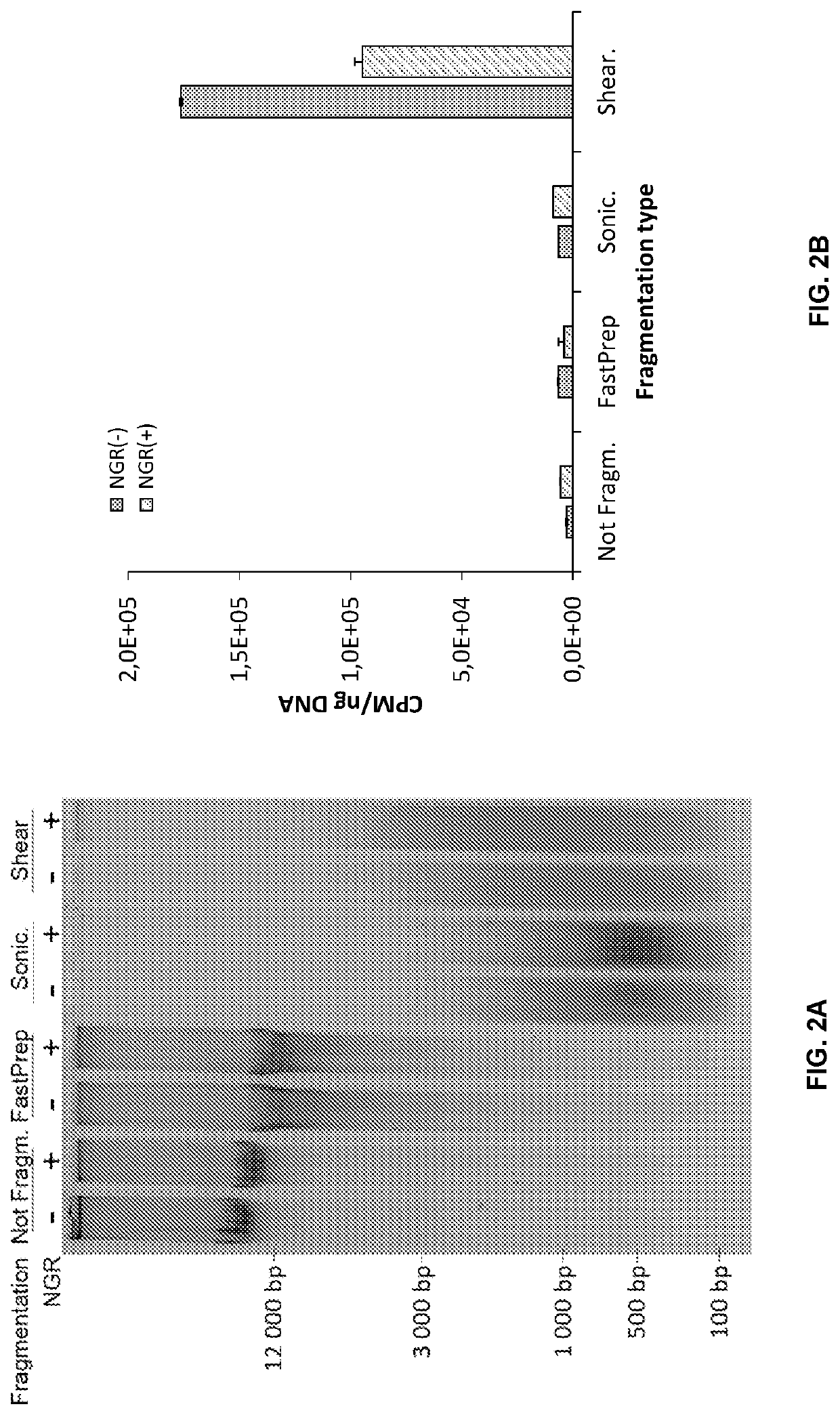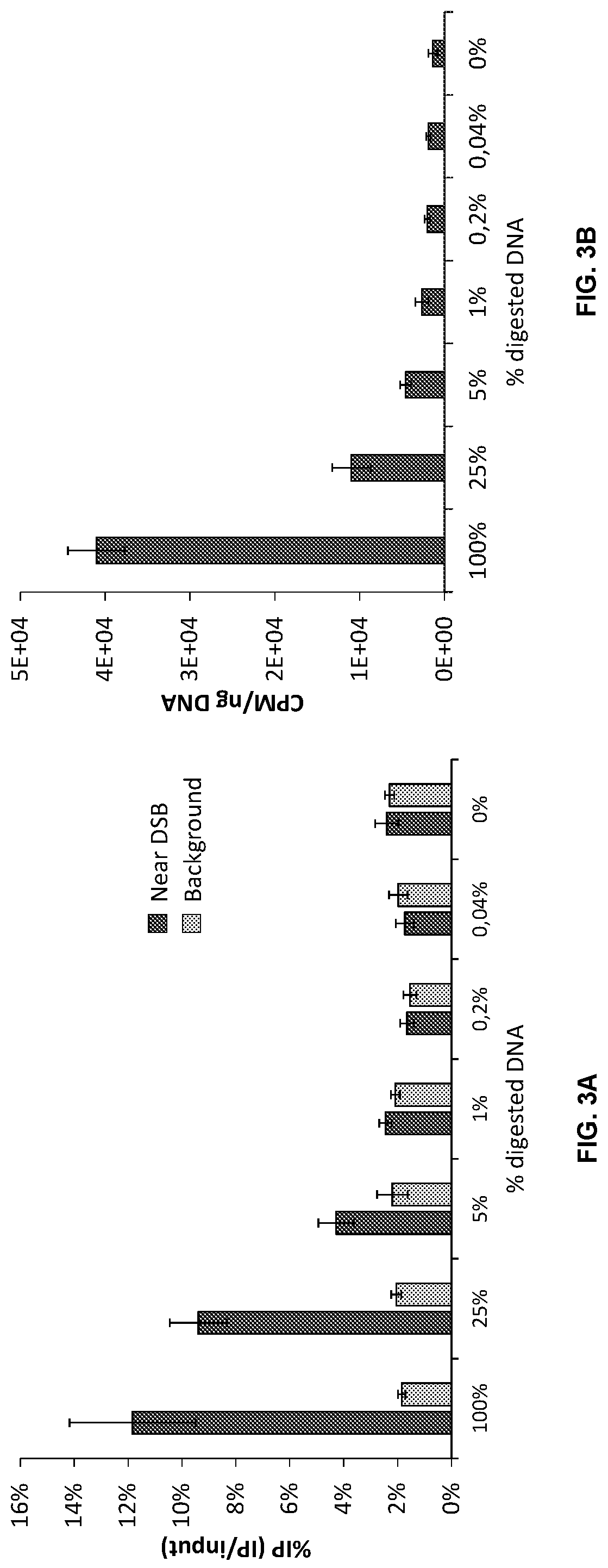Double-strand DNA break quantification method
a double-strand dna and quantification method technology, applied in the field of double-strand dna break quantification, can solve the problems of rare breaks within high molecular weight dna that cannot be detected, techniques that probably underestimate the extent of dsbs, and can not be detected easily, so as to inhibit the amplification of dna molecules
- Summary
- Abstract
- Description
- Claims
- Application Information
AI Technical Summary
Benefits of technology
Problems solved by technology
Method used
Image
Examples
example ii
ic Assay
[0086]For convenience and technology transfer to the clinic, the method described in Example I was adapted as a colorimetric assay whereby the DNA to be labeled was immobilized onto protamine-coated microplate wells (see FIG. 7). Following a prior step of nick sealing and gap repair, TdT end-labeling of 3′-OH was performed using biotinylated dATP. The biotinylated ends were then revealed by binding to streptavidin linked to horseradish peroxidase (see FIG. 7). Reaction against the o-phenylenediamine dihydrochloride (OPD) substrate in the presence of H2O2 produced a yellow color proportional to the amount of DSBs present in the DNA sample. Optical density was determined using a microplate reader and the extent of DSB was established against a standard curve generated by adding know amount of DSB ends from digested recombinant DNA.
PUM
| Property | Measurement | Unit |
|---|---|---|
| concentration | aaaaa | aaaaa |
| concentration | aaaaa | aaaaa |
| volume | aaaaa | aaaaa |
Abstract
Description
Claims
Application Information
 Login to View More
Login to View More - R&D
- Intellectual Property
- Life Sciences
- Materials
- Tech Scout
- Unparalleled Data Quality
- Higher Quality Content
- 60% Fewer Hallucinations
Browse by: Latest US Patents, China's latest patents, Technical Efficacy Thesaurus, Application Domain, Technology Topic, Popular Technical Reports.
© 2025 PatSnap. All rights reserved.Legal|Privacy policy|Modern Slavery Act Transparency Statement|Sitemap|About US| Contact US: help@patsnap.com



